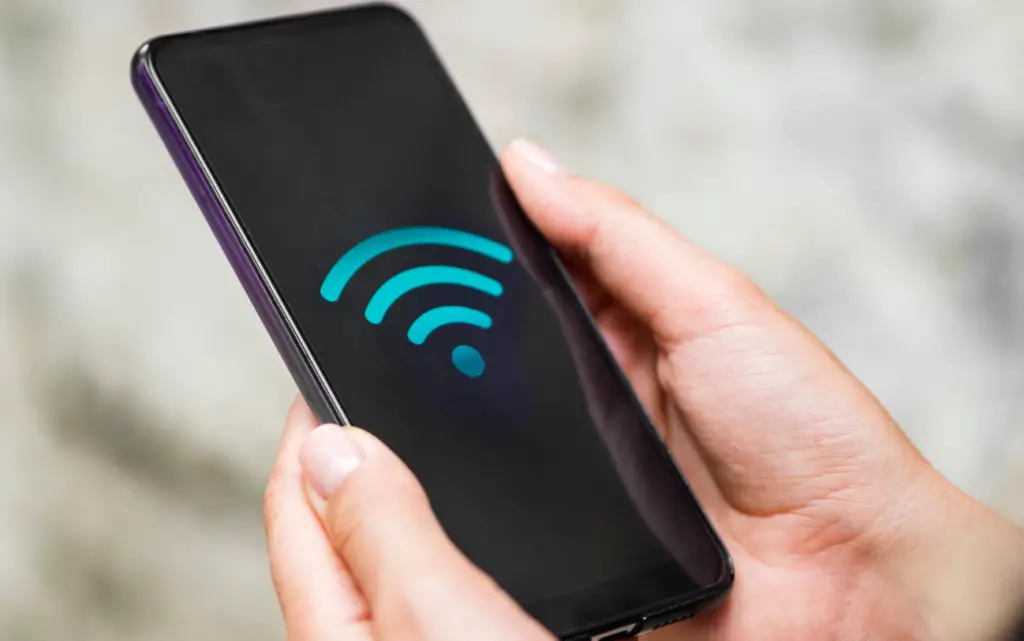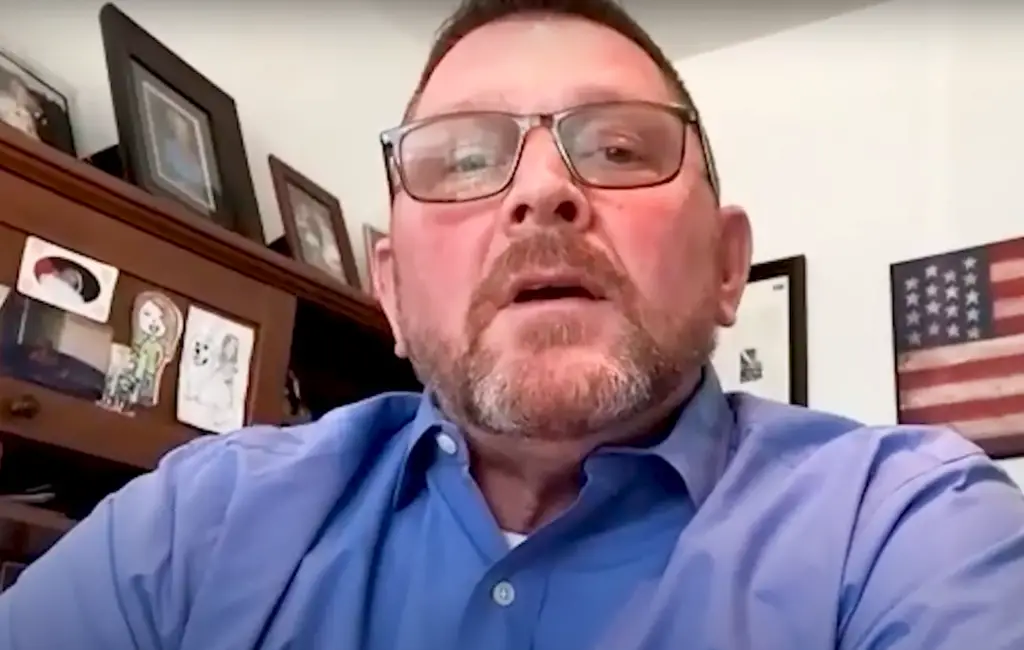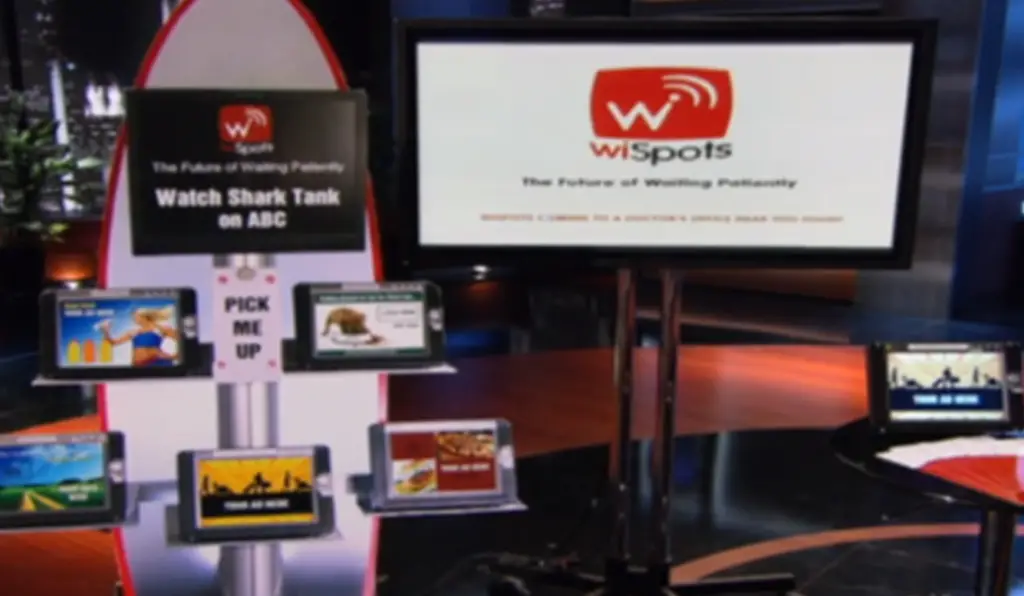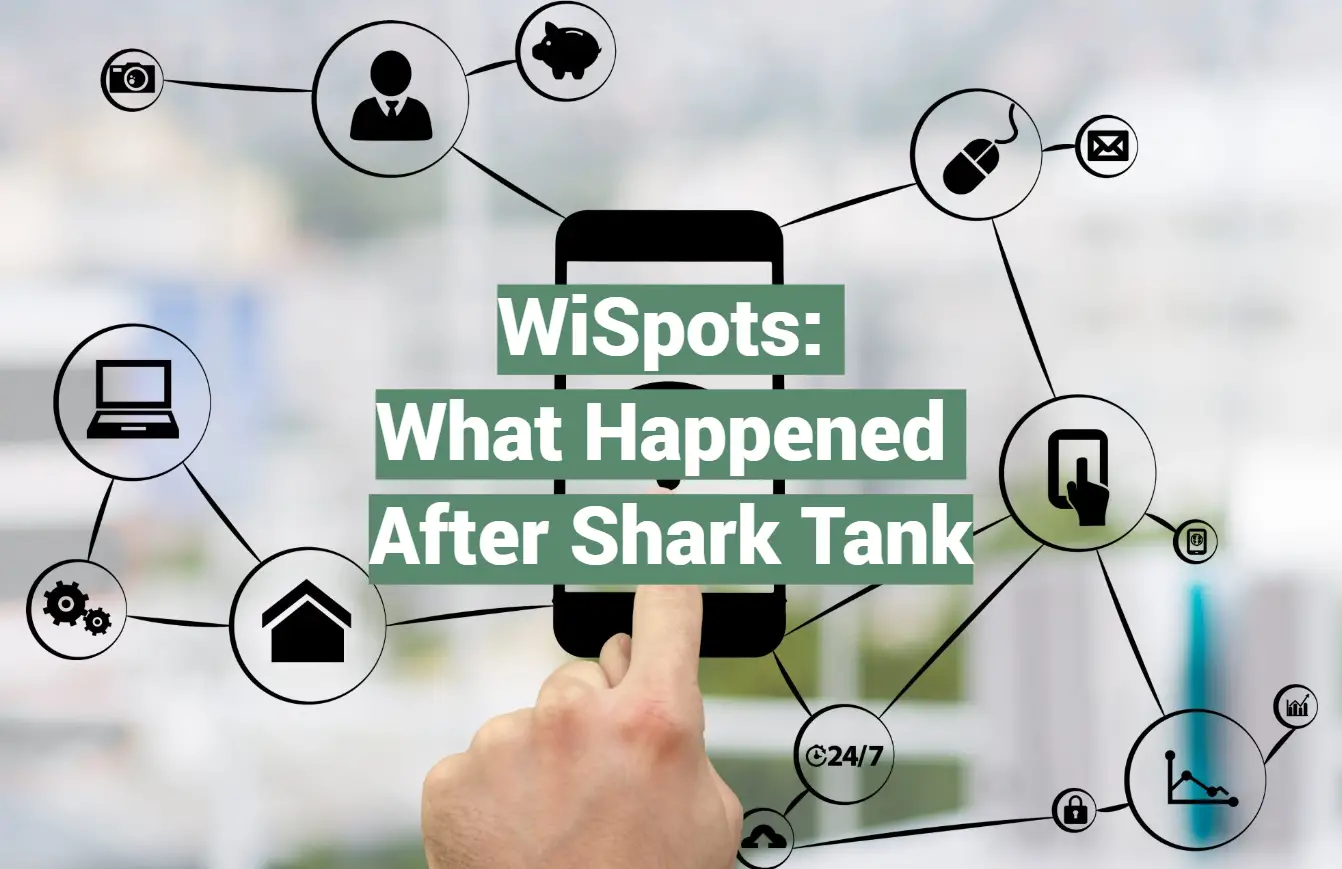In the world of innovative tech solutions, WiSpots has carved out a unique niche. Developed by Kevin Flannery, WiSpots aimed to transform waiting rooms in healthcare facilities into interactive hubs, providing free Wi-Fi access along with targeted information and advertisements.
The concept was introduced on ABC’s Shark Tank, catching the attention of viewers nationwide. But what happened to WiSpots after its appearance on the show? This article delves into the journey of WiSpots post-Shark Tank, exploring its growth trajectory, current status, and the impact it has had on the healthcare industry.
What Is WiSpots?
The WiSpots units themselves were designed to be user-friendly and engaging. Their interactive nature encouraged users to explore the content on offer, making their waiting time more enjoyable.
Moreover, WiSpots has the potential to be a valuable resource for healthcare facilities. By providing informative content, these units could educate patients about various health conditions, treatments, and prevention strategies. This added a layer of value that extended beyond merely providing entertainment.

Pros:
- Enhanced User Experience: The primary goal of WiSpots is to make the waiting experience more enjoyable and productive for users. By providing free Wi-Fi and informational content, it turns idle waiting time into a valuable period of learning or entertainment;
- Educational Content: Apart from entertainment, WiSpots can provide healthcare facilities with a platform to educate patients about various health conditions, treatments, and prevention strategies. This can be instrumental in promoting public health awareness;
- Potential for Advertising Revenue: WiSpots presents an opportunity for targeted advertising. Healthcare products and services can be advertised directly to a captive audience in waiting rooms, potentially generating additional revenue for the company;
- User-Friendly Interface: WiSpots units are designed to be interactive and easy to use, making them accessible to a wide range of users, including those who may not be tech-savvy;
Cons:
- High Initial Investment: The cost associated with installing WiSpots units in waiting rooms could be a deterrent for some healthcare facilities. This includes not only the cost of the units themselves but also the ongoing costs of maintenance and content updates;
- Dependence on Wi-Fi Connectivity: WiSpots’ functionality is heavily dependent on reliable Wi-Fi connectivity. In areas with poor or inconsistent internet service, the user experience may be compromised;
- Limited Use Case: While WiSpots can significantly enhance the waiting room experience, their utility is limited to this specific scenario. It may not offer much value in other contexts
- Privacy Concerns: As with any internet-connected device, there may be concerns about data privacy and security. Users may be wary of connecting their devices to a public Wi-Fi network due to the potential risk of data breaches [2];
Who May Benefit From Using Shark Tank:
- Healthcare Providers: Hospitals, clinics, and other healthcare facilities can use WiSpots to enhance the patient experience in their waiting rooms. They can also use it as a platform to educate patients about various health conditions and treatments;
- Patients: Patients waiting for their appointments can use WiSpots to access free Wi-Fi and informative content, turning their waiting time into a more productive and enjoyable experience;
- Advertisers: Companies selling healthcare products or services may benefit from advertising on WiSpots. Given that the audience is captive and relevant (people in a healthcare setting), this could be an effective way to reach potential customers;
- Healthcare Marketers: Marketers who specialize in healthcare can use WiSpots as a new channel to disseminate their messages. They can create targeted content tailored to the specific audience in each waiting room;
- Public Health Advocates: Organizations promoting public health can use WiSpots to spread awareness about various health issues. This could be an effective way to reach a large number of people with important health information;
- Wi-Fi Service Providers: Companies providing Wi-Fi services may also benefit from partnering with WiSpots, as it could lead to increased demand for their services;
About the Founders Of WiSpots
Kevin Flannery had a vision to enhance the waiting room experience for patients and visitors in healthcare facilities. His idea was simple but innovative: use technology to turn waiting time into a productive and enjoyable experience. To achieve this, he created WiSpots, interactive media centers that provided free Wi-Fi access and informational content to users.
For six long years, Kevin Flannery devoted his time and energy to the development of WiSpots, an interactive system designed to offer patients in bustling medical facilities, such as waiting rooms, check-in areas, and examination rooms, wireless access supported by advertisers. In this innovative setup, patients could effortlessly retrieve a “wireless web pad” from the WiSpot display, allowing them to check in for appointments, complete surveys, enroll in clinical trials, casually browse the web, or manage their emails – all the while being exposed to targeted advertisements and enticing coupon offers.

Once their appointment time arrived, patients would return the web pad to its charging cradle on the display. The entire cost of this service was footed by advertisers, notably pharmaceutical companies.
Kevin’s unwavering determination to see WiSpot succeed stemmed from his challenging upbringing within the foster care system, where he had faced adversity with limited resources. For Kevin, WiSpot represented the promise of a brighter future for his children.
When Barbara inquired about his personal investment in the project, Kevin revealed that he had taken the extraordinary step of securing two mortgages on his home, depleting his retirement savings, exhausting his children’s college funds, and maxing out his credit cards to fund WiSpot’s development. His financial sacrifice was immense.
However, during his appearance on Shark Tank, the sharks raised concerns about the product, primarily centered on the notion that WiSpot might not effectively address a pressing problem [3], as individuals already possessed tablets and smartphones to occupy themselves during medical office waits. Learning of Kevin’s dire financial predicament, the sharks implored him to reconsider, emphasizing the impact on his children.
Following the episode’s broadcast, Kevin did manage to generate some interest. He received a flood of correspondence, including a distressing number of death threats. Multiple sales and distribution firms reached out to explore the possibility of marketing and selling WiSpots, yet these discussions ultimately led to no concrete outcomes.
Presently, Kevin juggles a full-time job while dedicating approximately 20 hours per week to WiSpots, tirelessly pursuing customers, partners, and investors in the hopes of realizing his vision.
The Pitch Of WiSpots At Shark Tank
In his introductory video, Kevin Flannery presented himself and his company, WiSpots. He offered a glimpse of his home office, which also doubled as a play area for his young daughter. Flannery disclosed his background as a former Marine and his extensive two-decade-long tenure in the wireless technology field. He shared his courageous decision to leave his previous job to concentrate on his entrepreneurial endeavor, WiSpots [4].
As the video featured heartwarming moments of Flannery picking up his daughter from school, he candidly revealed the financial sacrifices he had made, including putting his home up for sale due to the burden of two mortgages, depleting his retirement savings, draining his children’s college funds, and maxing out his credit cards. The emotional scene showed Flannery tearing up, highlighting the profound importance of providing for his family, particularly given his upbringing in foster homes.
The video transitioned, and Kevin Flannery stepped into the Shark Tank, impeccably dressed in a suit and tie. He extended his greetings to the Sharks, introducing both himself and WiSpots. He emphasized the company’s tagline, “the future of waiting patiently”.
Flannery expressed gratitude to the Sharks for allowing him to enter their realm, albeit with a somewhat awkward jest about hoping they wouldn’t bite, a remark that was met with stoic stares from the Sharks.

Flannery proceeded to outline his funding request, seeking $ 1.2 million in exchange for a 10% equity stake in WiSpots. The sharks appeared visibly taken aback by this ambitious ask, with Kevin O’Leary cautioning Flannery about the substantial amount he was seeking, demanding evidence of WiSpots’ performance. Flannery, somewhat flustered, continued his pitch.
He delved into the nature of WiSpots, explaining that it had been engaged in research and development within healthcare and education for over six years, with a presence in the retail sector as well. When Robert asked for clarification on the product itself, Flannery described it as an interactive patient center, gesturing toward the stage’s setup of televisions and tablets. He detailed how patients could pick up the “wireless web pad” and utilize it for tasks such as surveys, check-ins, clinical trial sign-ups, and web browsing. However, he failed to articulate precisely how WiSpots generated revenue for doctors.
O’Leary interjected, questioning who would foot the bill for WiSpots, prompting Flannery to clarify that media buyers, advertisers, and pharmaceutical companies would be responsible for funding the service. O’Leary followed up with inquiries about the cost of installation, which Flannery revealed to be just under $ 10,000, eliciting a surprised reaction from Robert. Flannery further explained that doctors covered the installation expenses.
Robert expressed skepticism about doctors agreeing to pay such a sum, but Flannery asserted that he already had contracts in place. However, when asked if the doctors had actually paid, Flannery admitted that they had only signed contracts, revealing a crucial caveat: advertisers and media buyers would only pay once the ads had a guaranteed viewership.
Barbara sought further clarification and expressed her understanding that doctors were essentially waiting for advertisers to purchase ad space. Flannery became flustered and struggled to provide a clear response, leading to some confusion. Robert then redirected the conversation, inquiring about alternative means for bored and impatient patients to access the internet or check their emails.
Flannery suggested that patients could bring their laptops but emphasized the inconvenience. Robert, holding up an outdated smartphone, humorously questioned whether patients might have another device on hand. Flannery argued that most medical offices required patients to turn off their phones upon entry, and WiSpots offered more than just email access.
Barbara inquired about Flannery’s personal investment, and he revealed that he had injected over $ 550,000 of his own funds into the venture. Visibly emotional, he disclosed how he had tapped into his children’s college funds, secured two mortgages on his home, depleted his retirement savings, and accumulated substantial credit card debt to support WiSpots.
O’Leary intervened again, offering Flannery a sobering analogy likening his wealth to soldiers sent into battle daily with the goal of capturing assets and returning them safely. O’Leary accused Flannery of letting his “soldiers” perish daily and advised him to halt the financial hemorrhaging. O’Leary decided to pass on the opportunity.
Flannery, his face flushed, attempted a counterargument, suggesting that the Sharks might not fully grasp the business concept. Daymond reassured him that they did, but Kevin Harrington voiced his reservations about the advertising-centric model. He questioned the practicality of patients picking up the tablet solely for ad viewing and opted out of the deal.
With O’Leary and Harrington out, Barbara commended Flannery for his dedication but emphasized the courage required to recognize when it’s time to quit. She also decided to pass. Daymond, expressing concern for Flannery’s family’s financial security, urged him to reconsider the risks he was taking. Flannery explained his motivation to provide a better life for his children, but Daymond decided to pass as well.
Robert was the last Shark standing and, while empathizing with Flannery’s journey from humble beginnings, cautioned against putting one’s family at risk. He cited the importance of saving to secure one’s family’s future, asserting that there’s a fine line between belief and foolishness. Ultimately, Robert chose to pass as well.

Kevin Flannery thanked the Sharks for their insights and exited the stage. In their post-presentation discussion, Robert described the experience as heartbreaking, and Kevin remarked on the sobering glimpse into the harsh realities of business. Robert attributed the issue to “false encouragement” but believed they had offered Flannery unbiased advice.
WiSpots After The Shark Tank
Despite facing rejection from the Sharks, Kevin Flannery’s journey took an unexpected turn as numerous sales and distribution companies reached out to express their keen interest in marketing and selling WiSpots’ innovative patient interaction center. It seemed that these companies recognized the potential of WiSpots’ offerings, despite the initial setback in the Shark Tank.
In a promising development, Kevin’s subsequent venture, WiFiciency, expanded its product range to cater to medical centers, hospitals, and various healthcare facilities [5]. The merger with the Worthington Healthcare Corporation proved to be a strategic move that yielded positive long-term results.
Reflecting on his remarkable journey, Mr. Flannery shared his perspective with the News Observer, highlighting his transformative experience. He recounted a trajectory that saw him transition from wealth to near destitution and then to a determined ascent. With unwavering conviction, he expressed his belief that his business was on the cusp of taking off and achieving substantial success.
Kevin Flannery’s resilience and entrepreneurial spirit had come full circle, promising a bright future for his ventures in the healthcare technology industry.
In an interview with the News Observer, Kevin reflected on his journey, highlighting a significant transformation from prosperity to a period of financial struggle and then a determined climb back to success. He expressed confidence in the potential of his company, stating, “This company will take off and be a great success”.

The Net Worth Of WiSpots
The present-day financial status of WiSpots, years following their appearance on Shark Tank, remains undisclosed due to WiSpots having ceased its operations.
During their feature on Shark Tank, the company held an approximate valuation of $ 12 million, as confirmed by its creator, Marine Kevin Flannery. Kevin was willing to relinquish a 10% interest in WiSpots to the Sharks in exchange for a $ 1.2 million investment [6].
Nevertheless, the show did not yield any investment offers, leaving Kevin without a financial partnership from the Sharks. Subsequent to the episode’s broadcast, Kevin received inquiries from various enterprises and distribution channels intrigued by WiSpots and its patent engagement center.
In collaboration with these interested parties, he initiated a new venture named “WiSpotter”. Unfortunately, WiSpots eventually ceased its operations, and Kevin has since transitioned to different professional pursuits.
Alternatives To WiSpots:
- wi-Q: wi-Q is a mobile ordering solution that can be used in various settings, including healthcare facilities. It allows users to access services and information directly from their devices, which can enhance the waiting room experience;
- WISPOT: WISPOT is another alternative that provides intelligent Wi-Fi services. It integrates with other systems such as WIMAP, WIQUEST, MYGUEST, ERPs, and CRMs, offering a comprehensive solution for businesses;
- Carrot Fertility: While not a direct alternative, Carrot Fertility is an example of a company that uses technology to improve patient experiences. They provide fertility benefits solutions for employers, but their focus on user-friendly tech interfaces might offer inspiration for similar applications in waiting rooms;
- TelSmart EV Charging: This is another venture by Kevin Flannery, the founder of WiSpots. TelSmart EV Charging offers a network solution for electric vehicle charging, demonstrating Flannery’s continued commitment to innovative tech solutions [7];
FAQ:
- How does WiSpots work?
WiSpots is an interactive system developed by Kevin Flannery that provides advertiser-supported wireless access to patients in high-traffic areas such as waiting rooms in healthcare facilities. The system not only offers Wi-Fi connectivity but also provides targeted information and advertisements to the users. This could include educational content about health conditions, treatments, and prevention strategies, as well as promotional material for relevant products and services.
- What other ventures has Kevin Flannery been involved in?
Kevin Flannery has been involved in other ventures such as TelSmart EV Charging, which offers a network solution for electric vehicle charging.
- Does WiSpots only operate in healthcare facilities?
While WiSpots was primarily designed for use in healthcare facilities’ waiting rooms, the concept could potentially be applied to any high-traffic area where people have to wait, such as airports, salons, or car service centers. However, there’s no public information indicating that WiSpots has expanded its services beyond healthcare facilities.
- Who is the owner of WiSpots?
Kevin Flannery is the owner and developer of WiSpots.
- What is Kevin Flannery doing now?
There isn’t recent information available on what Kevin Flannery is currently doing. However, he has been involved in other ventures in the past, such as TelSmart EV Charging, demonstrating his continued interest in innovative tech solutions.

- Is WiSpots still in business?
Based on the information available, it’s unclear whether WiSpots is still in operation. The latest public information about the company dates back to 2023, and there are no recent updates or news about the company’s current status.
- Who is the most successful “shark” with deals?
Determining the “most successful” shark can depend on various factors, including the number of deals made, the total investment amount, and the overall return on investment. However, one of the sharks who has made the most deals is Robert Herjavec, while Mark Cuban has invested the most money overall.
- Is anyone on Shark Tank a billionaire?
Yes, Mark Cuban, one of the sharks on Shark Tank, is a billionaire. He made his fortune through various business ventures, most notably the sale of his internet company Broadcast.com to Yahoo! in 1999.
- Was Shark Tank cancelled?
There’s no information available suggesting that Shark Tank has been canceled. The show has been a popular fixture since its debut in 2009 and continues to air new episodes.
Useful Video: Mortgaged My House, My Kids College Funds
References:
- https://sharktanktales.com/wispots-shark-tank-update/
- https://biznewske.com/what-happened-to-wispots-after-the-shark-tank-pitch/
- https://www.sharktankblog.com/business/wi-spots/
- https://gazettereview.com/2016/10/wispots-update-happened-shark-tank/
- https://competitiveentrepreneur.com/shark-tank/wispots/
- https://bizzbucket.co/wi-spots-shark-tank-update/
- https://allsharktankproducts.com/service/wispots-waiting-room-advertising/














Leave a Reply